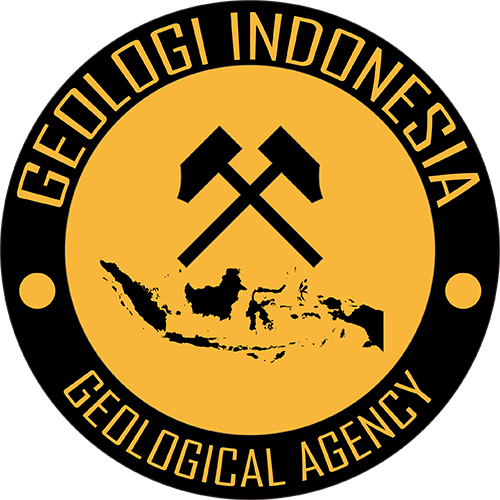Basin with Hydrocarbon Indication
Basin Status
Passive Margin Fore Arc
Tectonic Setting
0
Area (km2)
0
Visitor Count
0
Likes
Prospectivity & Resources
of
Buru Basin
Basin Capacity
Data based on
31 Aug 2025
Oil
N/A
MMBO
(Million Barrels of Oil)
Gas
N/A
TCF
(Trillion Cubic Feet)
Resources
Data based on
31 Aug 2025
Oil
Conventional 118.54
Conventional 118.54
MMBO
(Million Barrels of Oil)
Gas
Conventional 0.12
Conventional 0.12
TCF
(Trillion Cubic Feet)
Oil
Unconventional N/A
Unconventional N/A
MMBO
(Million Barrels of Oil)
Gas
Unconventional N/A
Unconventional N/A
TCF
(Trillion Cubic Feet)
Executive Summary
of
Buru Basin
Description
Version
1
Published Date
24 Jan 2023
Uploaded Date
-
Photos
Some footage of Buru Basin
Introduction
Preliminary details of Buru Basin
Data based on:
24 Jan 2023
Exploration History
Detailed history of Buru Basin
Data based on:
24 Jan 2023
Regional Geology
Detailed regional geology of Buru Basin
Buru Island is included in the non-volcanic Outer Banda Arc of islands group. The island is a relatively rigid continental fragment at the northwestern edge of the Outer Banda Arc thrust belt which consists of metamorphic rock that covers nearly 50% of the island. The metamorphic rocks were covered to the south and west by the deposition of Mesozoic and Tertiary sedimentary rocks. Deltaic deposition also developed along the west and north coasts with Quaternary age overlapping older rocks.Based on the results of seismic analysis, the structural pattern offshore of Buru Island is generally influenced by left strike-slip fault activity which has a northeast-southwest trend. These faults result in deformation processes in the study area.The potential source rock on Buru Island has been evaluated by several previous researchers.
Data based on:
24 Jan 2023
Petroleum System
Detailed petroleum system of Buru Basin
Evaluation of source rock based on samples from the surface can be concluded that the rock potential is in the Triassic Ghegan Formation.The potential reservoir rocks surface can be concluded that the rock potential is in the Triassic Ghegan Formation.The potential reservoir rocks based on the results of field research are limestones from the Ghegan Formation (Triassic), limestones from the Kuma Formation (Cretaceous) and sandstones from the Hotong Formation (Miocene). While the potential caprocks in the Buru Basin are marl from the Waeken Formation and claystone from the Hotong Formation.Based on observations from the field, it shows that Buru Island lacks traps of significant size. This island is basically a large anticline that is open at the top and in the middle of the anticline is exposed basement rock in the form of metamorphic rock. The structure on the limb anticline is a normal fault, it is unlikely to become a hydrocarbon trap. However, from the results of seismic interpretation at sea (offshore) there are several hydrocarbon traps.Hydrocarbon traps in the Buru sea area (offshore) mainly consist of structural traps in the form of rollover anticlines and pinchouts.Lead identification is related to three way dip closure and four way dip closure traps. All leads are concluded to have high risk – very high risk, especially because there are no wells in this area, the quality of the trap, source rock, reservoir rock and bedrock conditions that are still being debated, whether oceanic or continental, is still questionable. The prospect of the Buru offshore area is in the Mesozoic Sediment interval equivalent to the Ghegan Formation, namely OOIP of un-risked P50=2057.49 MMBO and risked=118.54 MMBO (for oil case) and OGIP of un-risked P50=2050.21 BSCF and risked=118.13 BSCF (for gas case)
Data based on:
24 Jan 2023
Resources
Detailed resources of Buru Basin
-
Data based on:
24 Jan 2023
Petroleum System Chart
of
Buru Basin
Description
Version
1
Published Date
20 Jun 2023
Uploaded Date
07 Jul 2023
Petroleum System Chart
Petroleum system chart to Buru Basin
Montage
of
Buru Basin
Description
Version
-
Published Date
-
Uploaded Date
-
Montage
Detailed montage of Buru Basin
Reports & Publications
of
Buru Basin
Description
Version
1
Published Date
-
Uploaded Date
20 Jul 2023
Reports & Publications PDF
The PDF displayed is only pages 1 to 20. For a complete PDF, you can download it by clicking the download button.
Archives of Report & Publication
| Date | Report Description | Version | Doc | |
| 01 Nov 2018 | Rekomendasi Wilayah Keprospekan Migas Buru | 1 | Download PDF |
| Date | Publication Description | Version | Doc | |
| Oct 01, 2022 | Jurnal Cekungan Buru Tahun 2022 | 1.0 | Download | |
| Oct 07, 2021 | Jurnal Cekungan Buru Tahun 2021 | 2.0 | Download | |
| Oct 06, 2020 | Jurnal Cekungan Buru Tahun 2020 | 1.0 | Download | |
| Oct 03, 2019 | Jurnal Cekungan Buru Tahun 2019 | 1.0 | Download | |
| Oct 07, 2018 | Jurnal Cekungan Buru Tahun 2018 | 2.0 | Download | |
| Oct 01, 2017 | Jurnal Cekungan Buru Tahun 2017 | 1.0 | Download | |
| Oct 03, 2016 | Jurnal Cekungan Buru Tahun 2016 | 2.0 | Download | |
| Oct 07, 2015 | Jurnal Cekungan Buru Tahun 2015 | 2.0 | Download | |
| Oct 09, 2014 | Jurnal Cekungan Buru Tahun 2014 | 1.0 | Download | |
| Oct 09, 2013 | Jurnal Cekungan Buru Tahun 2013 | 2.0 | Download | |
| Oct 08, 2012 | Jurnal Cekungan Buru Tahun 2012 | 2.0 | Download |


